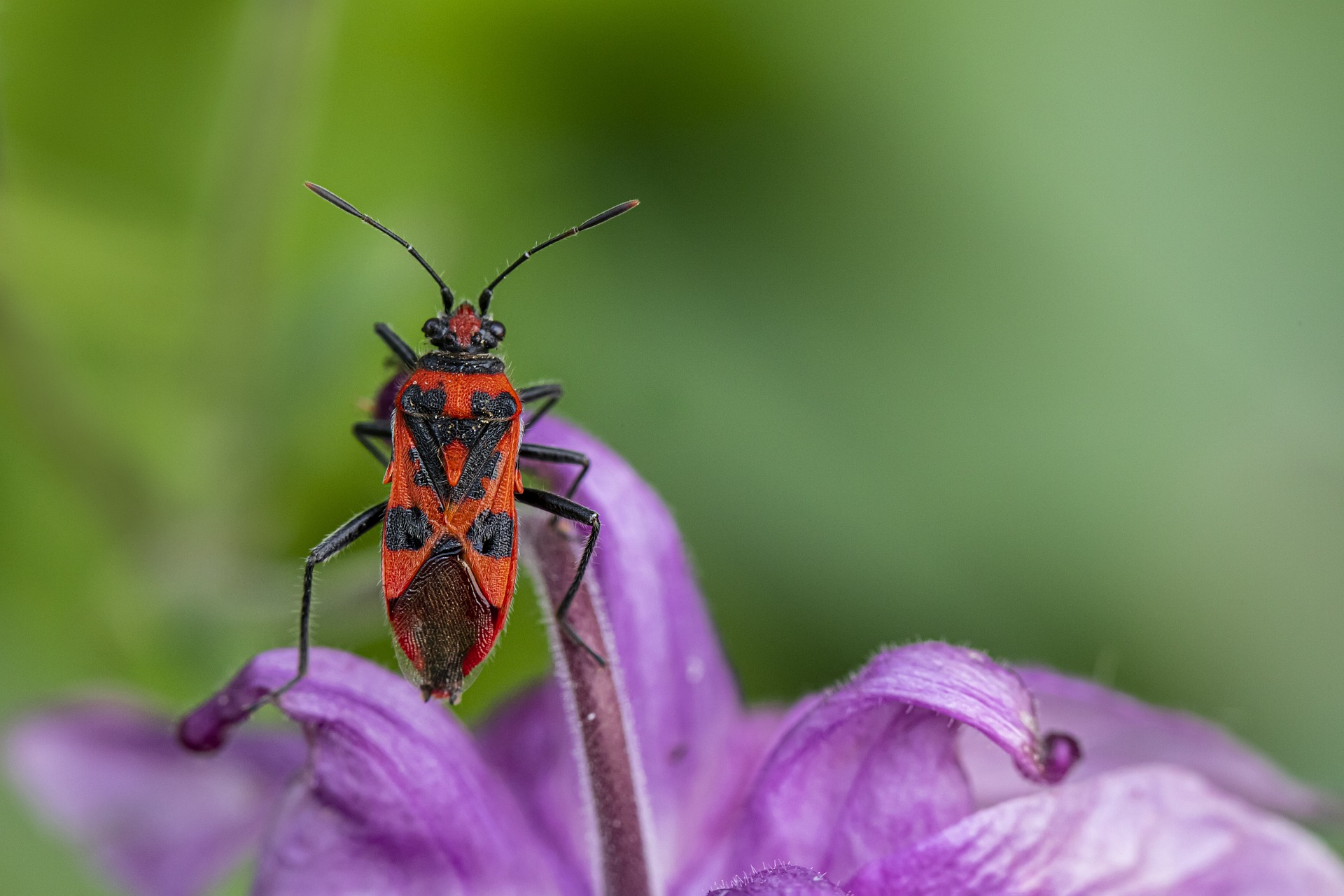That’s a great request! The Firebug (Pyrrhocoris apterus) is one of the most easily recognized and common insects across Europe, celebrated for its striking red and black warning coloration.
Here is a deep review of its key characteristics, biology, and fascinating social behavior.
🔥 Firebug (Pyrrhocoris apterus) Deep Review
1. Classification and Morphology
| Feature | Detail |
| Order/Family | Hemiptera (True Bugs) / Pyrrhocoridae (Red and Black Bugs) |
| Size | Medium-sized bug, typically 9–12 mm long. |
| Coloration (Aposematism) | Exhibits classic aposematic (warning) coloration: a bright red body overlaid with striking black markings on the dorsal (upper) side of the thorax and the forewings (hemelytra). This signal warns predators that the insect is unpalatable or toxic. |
| Wing Polymorphism | The species name apterus means “wingless,” referring to the typical form where the forewings (hemelytra) are short (brachypterous), not covering the entire abdomen. This makes them flightless. However, winged (fully developed, macropterous) individuals occasionally occur, especially in dense populations or during stressful conditions, allowing for dispersal. |
| Mouthparts | Like all true bugs (Hemiptera), it has specialized piercing and sucking mouthparts (a rostrum or beak) used for feeding. |
2. Distribution and Habitat
- Geographic Range: Very widespread across the Palaearctic region, encompassing most of Europe (except Scandinavia and the British Isles, where it is more localized), North Africa, and extending across temperate Asia to China.
- Habitat Preference: A generalist species, often found in human-modified landscapes:
- Primary Habitats: Parks, gardens, urban areas, hedgerows, and sunny forest edges.
- Aggregation Sites: They often aggregate in large numbers at the base of certain trees, particularly Lime (Tilia species) and Mallow (Malva).
3. Biology and Behavior
Diet (Sap and Seed Feeder)
The Firebug is phytophagous (plant-feeding), but its diet is varied:
- Primary Diet: The main food source is fallen seeds and fruits, especially seeds of Lime (Linden) trees and Mallows. They use their proboscis to pierce the seed coat and suck out the contents.
- Secondary Diet: They will also pierce and suck sap from soft parts of plants.
- Opportunism: They are somewhat opportunistic scavengers and are occasionally recorded feeding on dead insects or their own dead.
Social Behavior and Aggregation
- Gregariousness: Firebugs are highly gregarious, often forming dense aggregations or clumps, especially when basking in the sun, under stones, or at the base of trees.
- Purpose of Aggregation: This behavior serves several purposes:
- Thermoregulation: Clumping helps the bugs maintain warmth and maximize sun exposure.
- Defense: The large group visually amplifies the aposematic warning coloration, making the warning signal more effective against predators.
- Mating: Firebugs can be seen mating end-to-end for extended periods, sometimes for several hours or even days. This extended coupling is a form of mate guarding, ensuring that the male’s sperm is used to fertilize the eggs.
Life Cycle
- Generations: Typically univoltine (one generation per year) in northern and central Europe, but possibly bivoltine in warmer climates.
- Overwintering: They overwinter as adults in large clusters in sheltered spots, such as under leaf litter, bark, or stones.
- Development: Eggs are laid in the spring in moist soil or detritus. The nymphs (immature stages) resemble small, wingless versions of the adults, often showing more red coloration than black. Development is complete by mid-summer.
4. Ecological Role
- Seed Dispersal/Predation: By feeding on fallen seeds, the Firebug contributes to the natural ecosystem as both a seed predator and a decomposer (by processing the dead material).
- Food Chain: Despite its toxins, it is preyed upon by certain specialized birds and spiders that can tolerate or bypass its chemical defenses.
Visited 867 times, 8 visit(s) today
Views: 1648
Subscribe to the newsletter:
